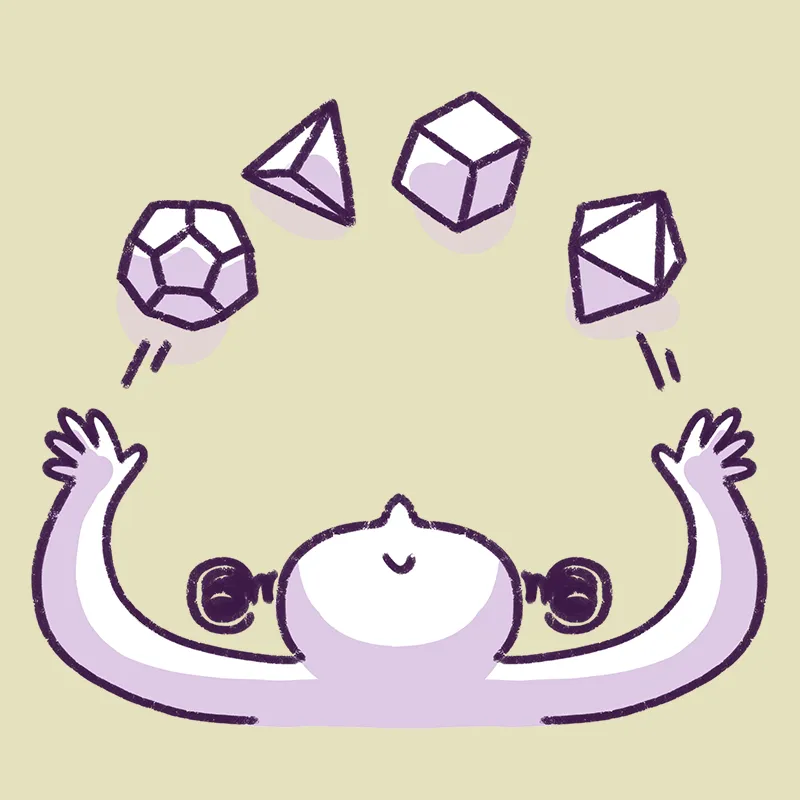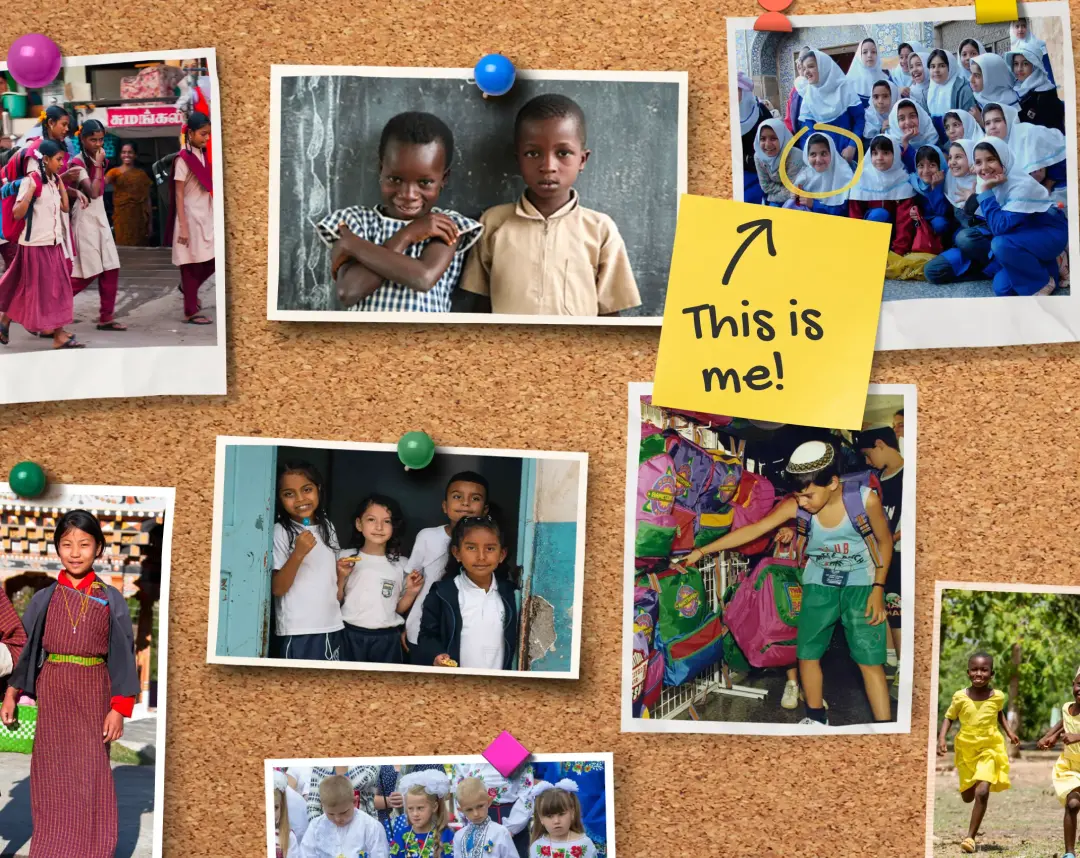The 90 stitched roundels in ‘Sewn Antidote’ reflect our collective experience of the pandemic and the diverse creative ways we responded to the isolation caused by the virus.
Lara Hailey, British textile and visual artist.
Sewn Antidote
During COVID-19, Lara Haily and her students made a quilt with messages like “The world on hold” and “Keep on keeping safe”.
It shows how people felt during the lockdown, like waiting, being careful, and finding joy in small things. Some gardened, did crafts, or learned new skills.
Can you see your own lockdown feelings and activities in the quilt?


“Quilting bees” are social gatherings where people meet and work together to make a quilt. They originated in the 19th century as a way of socializing and creating bonds between the women who took part.

Quilting bee participants act like busy bees, producing textiles under the guidance of more experienced “queens”. Some patches are sewn together in a honeycomb pattern, inspired by nature.
Do dresses tell stories?
The “Red Dress Project” has involved 380 embroiderers over 14 years, mostly women from many countries and cultures around the world. Zoom in and explore the threads of their lives and the beauty of their work.
Red Dress 3D embed
Stitching letters
A long time ago, girls learned how to do things to help run a home. They often sewed or embroidered letters and words during sewing classes at school.
They also learned how to label their clothes with their names and initials. This helped them learn to read and write!

Knitting for all genders
In the mid-1900s, boys and girls learned the same skills so they could help around the house. Both boys and girls worked with textiles, wood, and did needlework.
This knitting fisherman was no different; knitting used to be something men did a lot, and now they could enjoy it again!


STEM skills
Learning about science, technology, engineering and math (STEM) is important for students and people working in the textile industry. Rachel Makinson (1917–2014) was an Australian textile scientist. She used her STEM skills to become a world expert on how wool felts, shrinks and creates friction.

Art + STEM
When artistic skills are mixed with STEM skills, they become a superpower for solving problems and creating new things. That’s why schools are adding the arts to STEM, making it STEAM. Doing art helps you to be creative and imaginative, using different parts of your brain to come up with new ideas.

Future skills
School should prepare us for the future. What skills do you think are important? The OECD, an international group, created a Learning Compass to help children prepare for the future. It combines skills such as teamwork with well-being and values. This helps us to become not only skilled, but also healthy, responsible and respectful citizens.
Did
you
know
?

Thinking about space and shape is important
Thinking about objects and how they fit together is a useful skill in science and maths. You may not realise it, but you use this skill every day – like when you put items in a cupboard, give directions, or move around furniture. Emily Farran, researcher
Which skills are taught in textile education?
Textile crafts and maker projects are a great way for kids to learn and practice creativity, critical thinking, teamwork and communication skills.
Sewing requires carefulness, focus on details, fixing skills, creativity, hand-eye coordination, and persistence.
Weaving involves recognizing patterns, understanding space, mastering techniques, solving problems, coordinating colors and managing equipment.
Knitting requires quickness, pattern reading, sensitivity to touch, flexibility, an understanding of math and the ability to come up with new ideas.
What’s in a stitch?
Stitching and embroidery have traditionally taught girls and women about feminine ideals.
Hand stitching is useful for making clothes, buttonholes and household items such as quilts.
Embroidering alphabets helped girls learn to add initials or names to their clothes.

Sewing machines help
The sewing machine, invented in 1851, made needlework, embroidery and dressmaking easier.
Sewing was an important training for young girls, who were expected to become skilled housewives or find work, for example, in a textile factory.

Do men knit?
Knitting involves making knots and loops to turn plant fibers such as cotton or animal fibers such as wool and silk into socks and clothes.
You may be surprised to learn that until the 1800s, men were the main knitters. Today, scientists are interested in knitting because it's similar to computer coding and solving math problems.

Telling woven stories
Weaving is an ancient craft in which fabric is made by crossing threads on a loom.
There are two sets of threads: one going up and down (warp), the other going from side to side (weft). They intertwine to make cloth for clothes and more.


From the 1800s, when mechanical textile machines were invented, girls and women worked in mills where they made cloth. They used big machines to weave threads into fabric. Some special women even became inventors or stood up for workers’ rights!

In the 1940s, women and girls worked as weavers, spinners, and seamstresses to help during the war. One important person, Stephanie Kwolek, was a chemist who invented Kevlar, a very strong and heat-resistant fiber. She and others like her had a big impact on textile science.
Textiles and art
Textile art mixes traditional skills with modern technology. Artists use old techniques like embroidery, stitching and knitting together with new technology to tell stories and engage our senses.
Want to know more?
Bibliography
General
Gilroy, C. G. (2023). The History of Silk, Cotton, Linen, Wool, and Other Fibrous Substances: Including Observations on Spinning, Dyeing, and Weaving. Good Press.
Postrel, V. (2020). The fabric of civilization: How textiles made the world. Basic Books.
Covid-quilts and arts
Barnes, S., & Tulloch, C. (2022). Sew Me a Quilt. Tell You a Story. Clothing Cultures, 9(1-2), 45-74.
Genoe, M. R., & Kulczycki, C. (2023). “I really don’t know what I would have done without it”: Crafting as a means of stress coping during COVID-19. Journal of Leisure Research, 1-21.
Haily, Lara (2024): Website. Collaborative Projects — Lara Hailey
Monnat, S. M. (2020). The Celebration of Learning Quilt: A Review During Distance Teaching.
Peterken, C. (2021). Walking, Staying In, and Making Sense: Quilting with Pandemic Matter. Imaginations, 12(2), 37-69.
Stalp, M. C. (2020). Covid-19 Global Quilt. The Journal of Modern Craft, 13(3), 351-357.
Strohmayer, A., & Strohmayer, A. (2021). Digitally Quilting Social Justice. Digitally Augmenting Traditional Craft Practices for Social Justice: The Partnership Quilt, 113-126.
Quilting
Crozier, V. (2018). From Useful Craft to Works of Art: The Transformation of Quilting in the United States from the Nineteenth Century, 1893-1933.
Gillespie, S. (2010). Quilts around the world: The story of quilting from Alabama to Zimbabwe. Voyageur Press.
Higgs, E., & Radosh, P. F. (2013). Quilts: moral economies and matrilineages. Journal of Family History, 38(1), 55-77.
Robertson, K. (2014). Quilts for the twenty-first century: Activism in the expanded field of quilting. Handbook of textiles, 197-210.
Scales, D. (2020). Guilds, Bees, and Circles: The Role of Crafting Groups in Women’s Intangible Cultural Heritage in the United States. University of Georgia.
Stitching
Anderson, L. (2018). Schoolgirl Embroideries: Integrating Indigenous Motifs, Materials, and Text. Published in The Social Fabric: Deep Local to Pan Global; Proceedings of the Textile Society of America 16th Biennial Symposium. Presented at Vancouver, BC, Canada; September 19 – 23, 2018. 1 10.32873/unl.dc.tsasp.0020.
British Schools Museum. First Threads: preparing girls for life. Exhibition book. Retrieved from britishschoolsmuseum.org.uk.
Hunter, C. (2019). Threads of Life: A History of the World Through the Eye of a Needle. United Kingdom: Hodder & Stoughton.
Rana, L. A. (2014). Stories behind the stitches: Schoolgirl samplers of the eighteenth and nineteenth centuries. Textile, 12(2), 158-179.
The sewing machine
Gregory, M. (2014). Superseding the Seamstress—The Sewing Machine, from Invention to Mass Production in a Generation. The International Journal for the History of Engineering & Technology, 84(2), 115-134.
Kang, S., & Dong, A. (2023). Gender-Based Social Revolutions and Their Effect on Technology Evolution: A Case Study of the Sewing Machine. International Design Engineering Technical Conferences and Computers and Information in Engineering Conference, 87349, V006T06A002.
Embroidery
Flower, C. (2016). Wilful Design: The Sampler in Nineteenth-Century Britain. Journal of Victorian Culture, 21(3), 301-321.
Remer, A. E. (2019). Lesson object as object lesson: The embroidery sampler. The Journal of the History of Childhood and Youth, 12(3), 345-352.
Rogers, C. (2019). The needle as medium: Using Embroidery to speak to ghosts. Art/Research International: A Transdisciplinary Journal, 4(1), 127-152.
Salvesen, K. (2020). The Word Became Thread and Was Stitched Among Us: Embroidering Literacy & Identity in Early North America & the British Isles (Doctoral dissertation, University of Pennsylvania)..[DL2]
Weaving
Albers, A. (2003). On Weaving. United States: Dover Publications.
Pärson, Å., & Sundström, A. (2021). The Weaving Handbook: The Art and the Craft: Theories, Materials, Techniques, and Projects. United States: Trafalgar Square Books.
Knitting and Crocheting
MacDonald, A. L. (2010). No Idle Hands: The Social History of American Knitting. United Kingdom: Random House Publishing Group.
Strawn, S. M. (2011). Knitting America: A glorious heritage from warm socks to high art. Voyageur Press (MN).
Textile education
Holdstock, K. (2024). Teaching a Diverse Primary Art Curriculum: A Practical Guide to Help Teachers. United Kingdom: Bloomsbury Publishing.
STEAM – Science, Technology, Engineering, Arts and Maths
Bix, A. S. (2014). Girls coming to tech! A history of American engineering education for women. MIT Press.
Braund, M., & Reiss, M. J. (2019). The ‘great divide’: How the arts contribute to science and science education. Canadian Journal of Science, Mathematics and Technology Education, 19, 219-236.
Chen, Tsurusaki, B. K., Tzou, C., Conner, L. D. C., & Guthrie, M. (2017). 5th-7th grade girls’ conceptions of creativity: Implications for STEAM education. Creative Education, 8(2), 255-271.
21st century skills
Koul, R. B., Sheffield, R., & McIlvenny, L. (2021). Teaching 21st Century Skills: Using STEM Makerspaces. Singapore: Springer Nature Singapore.
OECD. (n.d.). The OECD Learning Compass 2030. Retrieved from OECD Learning Compass
Textile art and artists
Carr, A. W. (2013). Women as Artists in the Middle Ages: “The Dark Is Light Enough.” Concise Dictionary of Women Artists, 3-20.
Fowler, C. (2014). A sign of the times: Sheila Hicks, the fiber arts movement, and the language of liberation. The Journal of Modern Craft, 7(1), 33-51.
Marsh, J. (2019). May Morris: ubiquitous, invisible Arts and Craftswoman. In Women Artists and the Decorative Arts 1880-1935 (pp. 35-52). Routledge.
Owen-Crocker, G. R. (2002). The Bayeux ‘Tapestry’: invisible seams and visible boundaries. Anglo-Saxon England, 31, 257-273.
Thomas, Z. (2020). Women art workers and the Arts and Crafts movement. In Women art workers and the Arts and Crafts movement. Manchester University Press.
Learning objectives
Based on Curriculum 21, German-speaking Switzerland, 2024.
The students …
TTG.1.A.1 for 9+
2 b) Can perceive and describe the effect of objects (interplay of function, construction, design elements). Recognise the processes used to create objects. Recognise the methods by which objects are made.
TTG.1.B.2 for 9+
2 b) Know and apply the technical terms of the tools, machines, materials and processes used in the process.
TTG.3.A.2 for 9+
2 b) Assess the impact of inventions on everyday life (e.g., sewing machine, loom, drill, wheel, gear).
NMG 1.6 for 7+
1 a) Describe and compare role behaviour with examples (e.g. Who has what tasks and abilities? Who wears what clothes? Who has what hobbies?).
Other competencies
Assess strengths and weaknesses of their learning and social behavior.
Look back on, describe and evaluate learning pathways (based on their learning experiences during COVID-19)
Copyright and licenses
3D Model of Red Dress
“The Red Dress Project” by Kirstie MacLeod and 380 embroiders from around the world (2009-2024), Sketchfab, Bath Spa Creative Computing. CC BY NC ND.



























